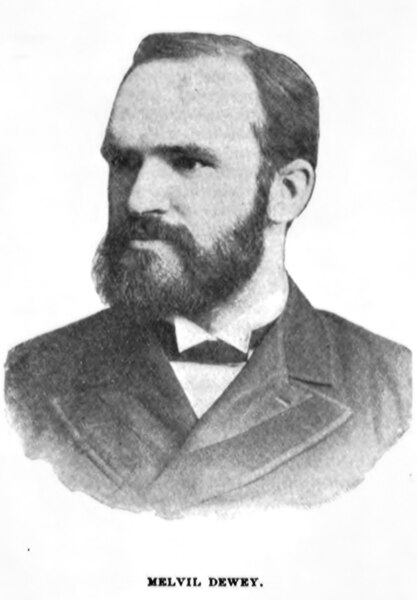Dewey Decimal Classification
The Dewey Decimal Classification (DDC), colloquially known as the Dewey Decimal System, is a proprietary library classification system which allows new books to be added to a library in their appropriate location based on subject.
It was first published in the United States by Melvil Dewey in 1876. Originally described in a 44-page pamphlet, it has been expanded to multiple volumes and revised through 23 major editions, the latest printed in 2011. It is also available in an abridged version suitable for smaller libraries. OCLC, a non-profit cooperative that serves libraries, currently maintains the system and licenses online access to WebDewey, a continuously updated version for catalogers.
A library bookshelf in Hong Kong classified using the New Classification Scheme for Chinese Libraries, an adaptation of the Dewey Classification scheme
Melvil Dewey, the inventor of the Dewey Decimal classification
Children being taught the top-level categories of the Dewey Decimal Classification system at a library in Edmonton, Alberta, Canada, in the 1960s
A library classification is a system used within a library to organize materials, including books, sound and video recordings, electronic materials, etc., both on shelves and in catalogs and indexes. Each item is typically assigned a call number, which identifies the location of the item within the system. Materials can be arrange by many different factors, typically in either a hierarchical tree structure based on the subject or using a faceted classification system, which allows the assignment of multiple classifications to an object, enabling the classifications to be ordered in many ways.
A library book shelf in Hong Kong arranged using the Dewey classification
The Moys Classification Scheme as used by the law library of the Hong Kong High Court




